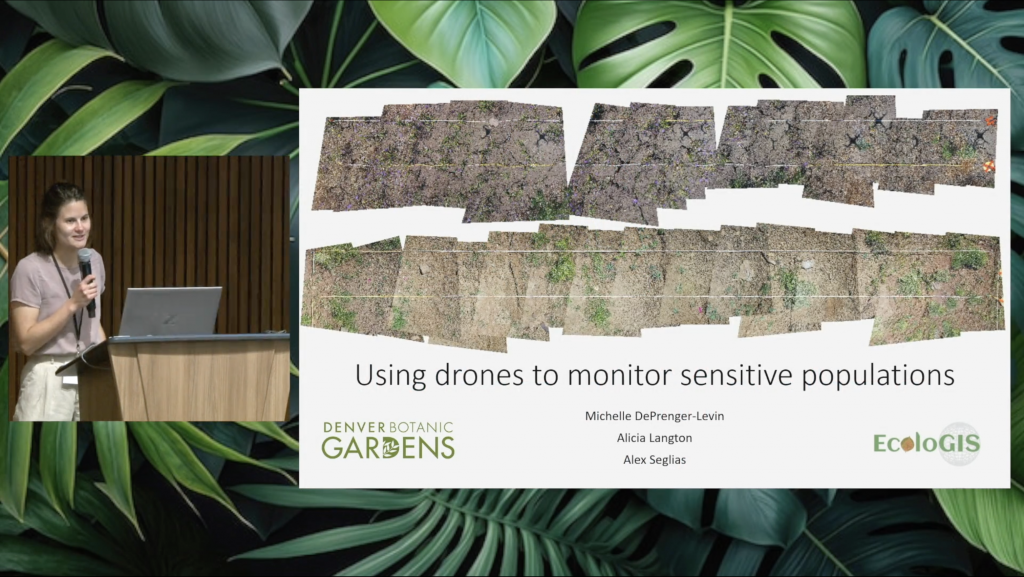
Denver Botanic Gardens has been conducting demographic studies of rare plants in Colorado since 1994 to inform extinction risk from demographic and environmental stochasticity. These studies are typically “low-tech” jobs that involve tracking survival, growth, and reproductive rates of individuals in the population. However, not all species are suitable for the traditional methods of annual […]
Read More…
Storyboard contributed by: Jason Ligon, Atlanta Botanical Garden Making conservation seed collections often require preliminary field visits to a rare plant population prior to collection, known as site assessments. In this video, the team at Atlanta Botanical Garden outlines their methods for assessing plant populations to ensure that the collection contains representative genetic diversity without […]
Read More…
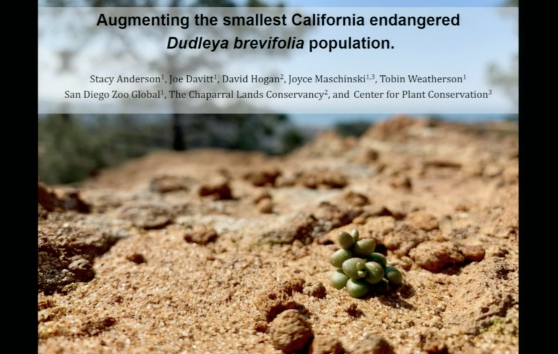
Stacy Anderson, Joe Davitt, Katie Heineman, David Hogan, Joyce Maschinski, and Tobin Weatherson, San Diego Zoo Global Declining small populations may be supported through augmentation. To aid the smallest of five populations of the tiny endangered succulent, Dudleya brevifolia, The Chaparral Lands Conservancy approached the San Diego Zoo Global Plant Conservation team to augment the […]
Read More…
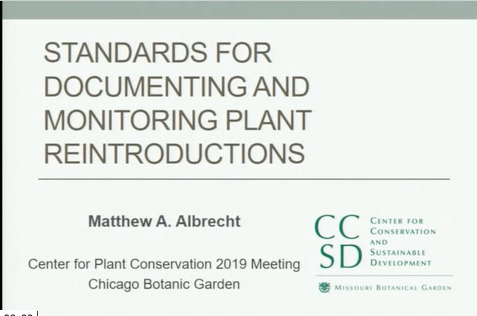
Matthew Albrecht, Missouri Botanical Garden Monitoring is a central component of reintroduction programs, but often receives less attention from practitioners than the preparation or implementation phases of a project. A well-designed monitoring program can detect changes in the environment over time, identify new threats that emerge at the reintroduction site, determine drivers of growth rates […]
Read More…
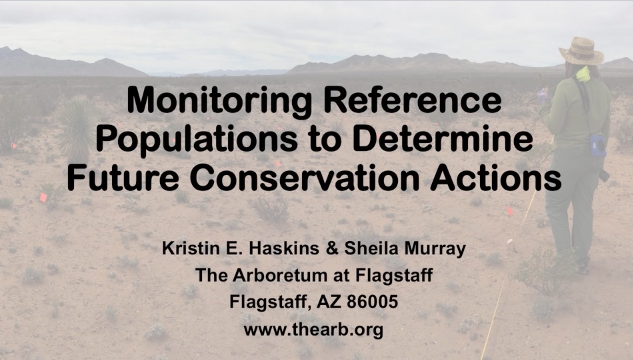
Kristin Haskins and Sheila Murray,The Arboretum at Flagstaff In 2013, The Arboretum at Flagstaff partnered with the Center for Plant Conservation and the Bureau of Land Management in New Mexico to examine conservation concerns of Chihuahua scurfpea (Pediomelum pentaphyllum), a tuber-forming legume. Our primary objective was to determine any changes in population size. In 2015, […]
Read More…
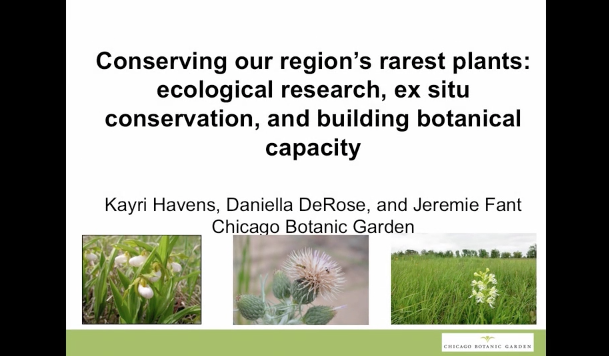
Kay Havens, Chicago Botanic Garden Chicago Botanic Garden’s Negaunee Institute for Plant Conservation and Science supports centers of excellence in conservation practice, science, and training, with an emphasis on understudied species with high conservation need. The research focuses primarily on preventing plant extinction, promoting plant diversity, and understanding plant interactions. Actions and outreach include advocacy, […]
Read More…
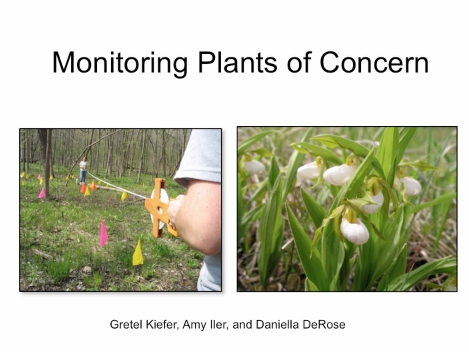
Daniella DeRose, Chicago Botanic Garden Chicago Botanic Garden’s Plants of Concern (POC) program is a collaboration between citizen scientists, natural resource managers, and researchers to collect data on rare plant populations in northeastern Illinois. The primary goal is to identify best conservation practices, while creating awareness and providing education on why conservation matters. POC engages […]
Read More…
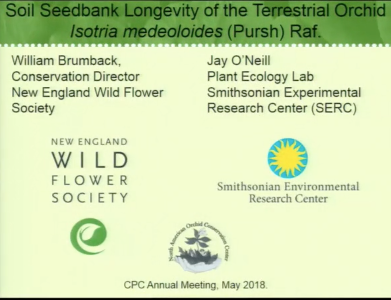
Seeds of terrestrial orchid species are small and essentially without food reserves, but data on the longevity in the wild of seed of most orchid species is lacking.
[…]
Read More…
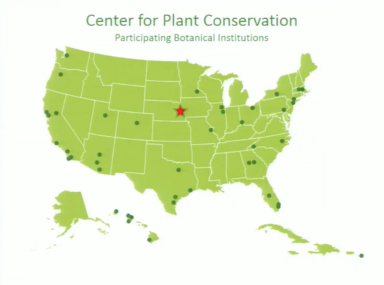
Research into the biology and conservation needs of an at-risk plant species can lead to better understanding of the plant community that supports the species and inform ecosystem scale conservation efforts.
[…]
Read More…
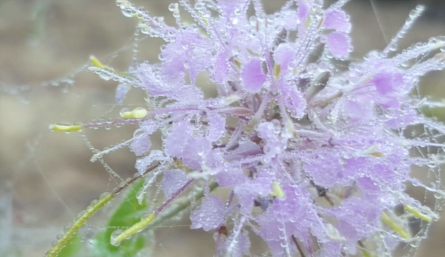
Philip Gonsiska, Whitney Costner, Cheryl Peterson, Bok Tower Gardens Warea amplexifolia (Clasping Warea) (Brassicaceae) is an annual endemic to sandhill habitat in the northern third of the Lake Wales Ridge in central Florida. It typically germinates between February and early May and flowers from August through October. The main threats to W. amplexifolia are development […]
Read More…
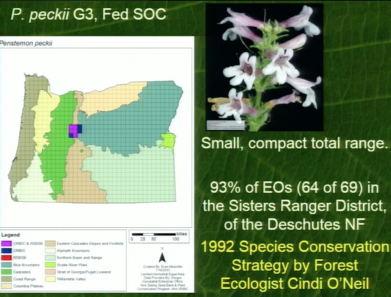
Ed Guerrant, Rae Selling Berry Seed Bank Penstemon peckii (G3-S3 Federal SOC) is an Oregon endemic with a relatively compact range in the semi-arid Ponderosa pine forest east of the Cascade Mountains. The vast majority of known populations (ca 93%) are almost entirely within the Sisters Ranger District of the Deschutes National Forest. A 1992 […]
Read More…
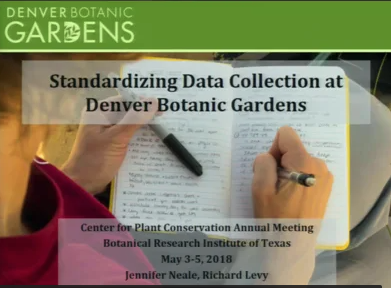
Jennifer Neale, Denver Botanic Gardens As scientific programs at Denver Botanic Gardens continue to grow we are working to standardize data collection across all projects to enhance and improve data utility. We have developed uniform protocols for documenting biodiversity for all studies whether they regard demographic studies, ecological monitoring, seed conservation, or floristic surveys. Collection […]
Read More…
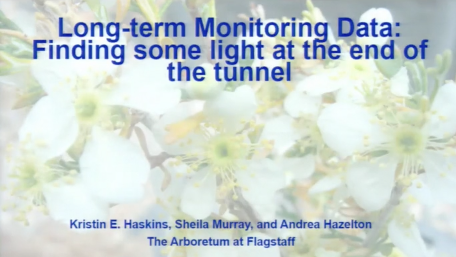
Kristin E. Haskins and Sheila Murray (The Arboretum at Flagstaff), and Andrea Hazelton (Desert Butte Botany) Acquisition of a long-term dataset is truly rare and can represent decades of hard work and thousands of dollars or more in exhausted resources. The standard model of monitoring year after year is unsustainable for most organizations and begs […]
Read More…











